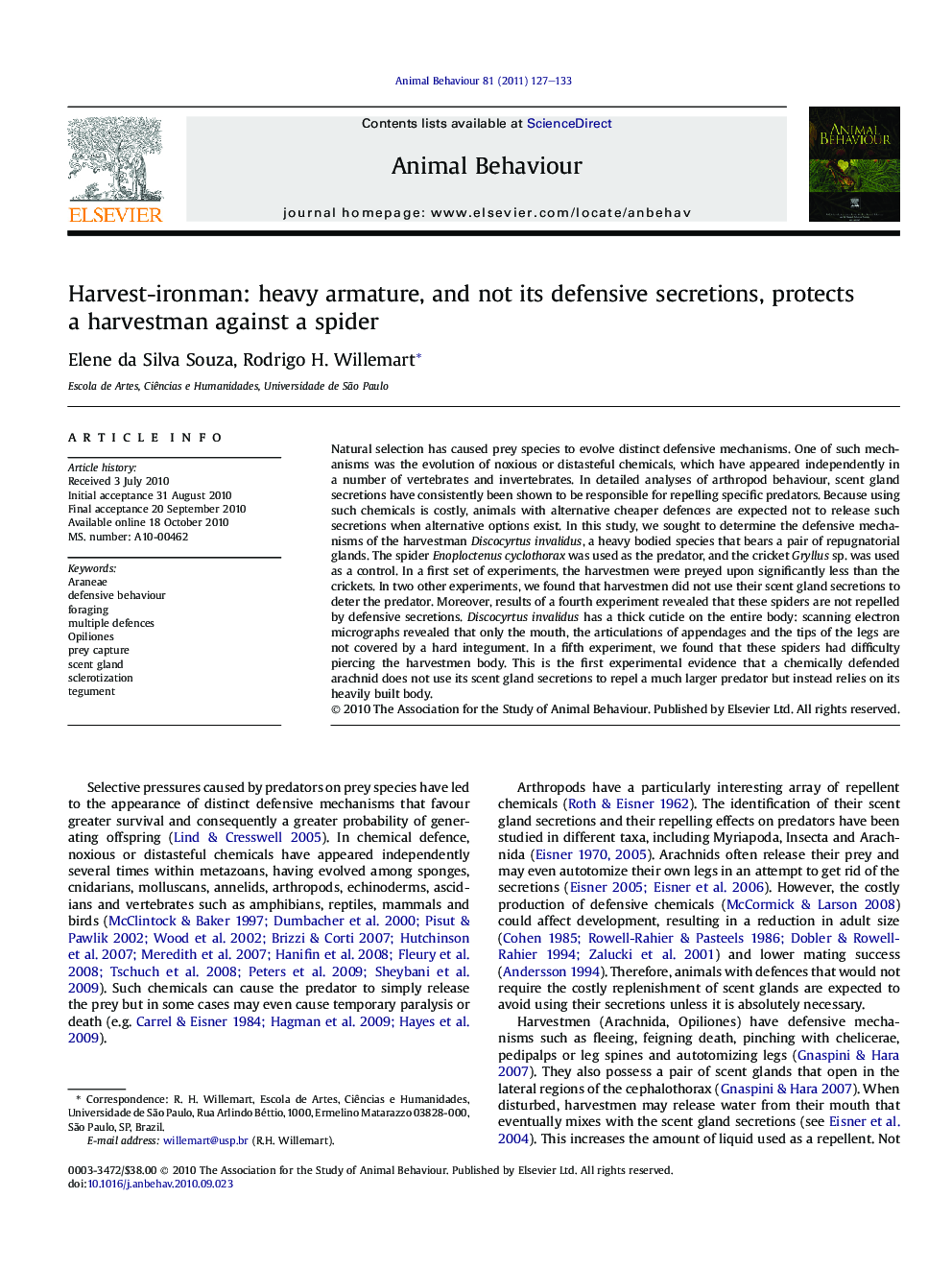| کد مقاله | کد نشریه | سال انتشار | مقاله انگلیسی | نسخه تمام متن |
|---|---|---|---|---|
| 10971038 | 1104291 | 2011 | 7 صفحه PDF | دانلود رایگان |
عنوان انگلیسی مقاله ISI
Harvest-ironman: heavy armature, and not its defensive secretions, protects a harvestman against a spider
دانلود مقاله + سفارش ترجمه
دانلود مقاله ISI انگلیسی
رایگان برای ایرانیان
کلمات کلیدی
موضوعات مرتبط
علوم زیستی و بیوفناوری
علوم کشاورزی و بیولوژیک
علوم دامی و جانورشناسی
پیش نمایش صفحه اول مقاله

چکیده انگلیسی
Natural selection has caused prey species to evolve distinct defensive mechanisms. One of such mechanisms was the evolution of noxious or distasteful chemicals, which have appeared independently in a number of vertebrates and invertebrates. In detailed analyses of arthropod behaviour, scent gland secretions have consistently been shown to be responsible for repelling specific predators. Because using such chemicals is costly, animals with alternative cheaper defences are expected not to release such secretions when alternative options exist. In this study, we sought to determine the defensive mechanisms of the harvestman Discocyrtus invalidus, a heavy bodied species that bears a pair of repugnatorial glands. The spider Enoploctenus cyclothorax was used as the predator, and the cricket Gryllus sp. was used as a control. In a first set of experiments, the harvestmen were preyed upon significantly less than the crickets. In two other experiments, we found that harvestmen did not use their scent gland secretions to deter the predator. Moreover, results of a fourth experiment revealed that these spiders are not repelled by defensive secretions. Discocyrtus invalidus has a thick cuticle on the entire body: scanning electron micrographs revealed that only the mouth, the articulations of appendages and the tips of the legs are not covered by a hard integument. In a fifth experiment, we found that these spiders had difficulty piercing the harvestmen body. This is the first experimental evidence that a chemically defended arachnid does not use its scent gland secretions to repel a much larger predator but instead relies on its heavily built body.
ناشر
Database: Elsevier - ScienceDirect (ساینس دایرکت)
Journal: Animal Behaviour - Volume 81, Issue 1, January 2011, Pages 127-133
Journal: Animal Behaviour - Volume 81, Issue 1, January 2011, Pages 127-133
نویسندگان
Elene da Silva Souza, Rodrigo H. Willemart,